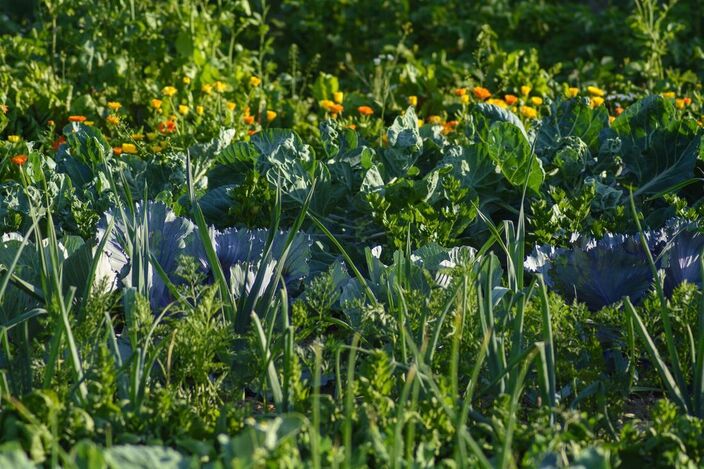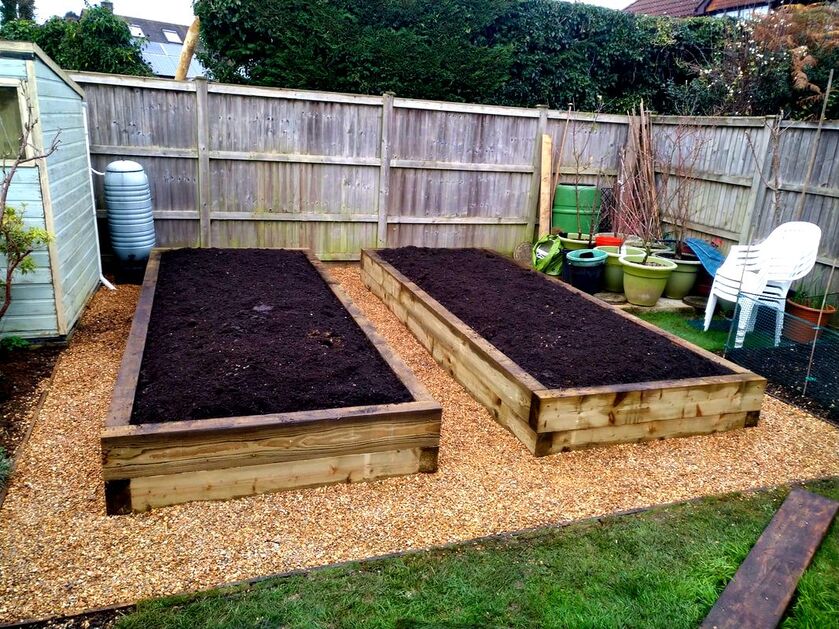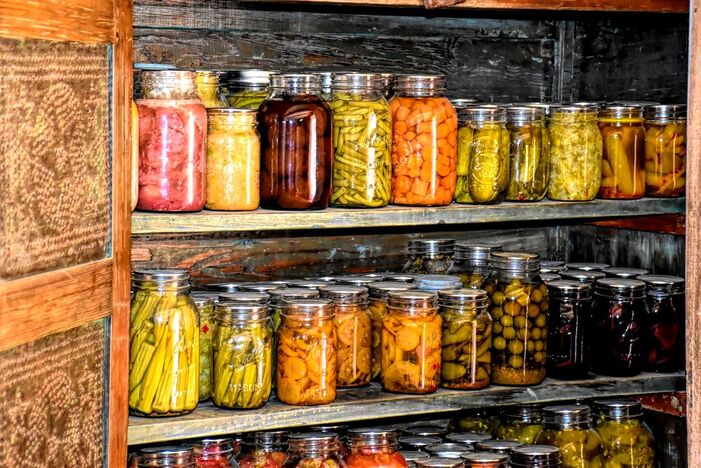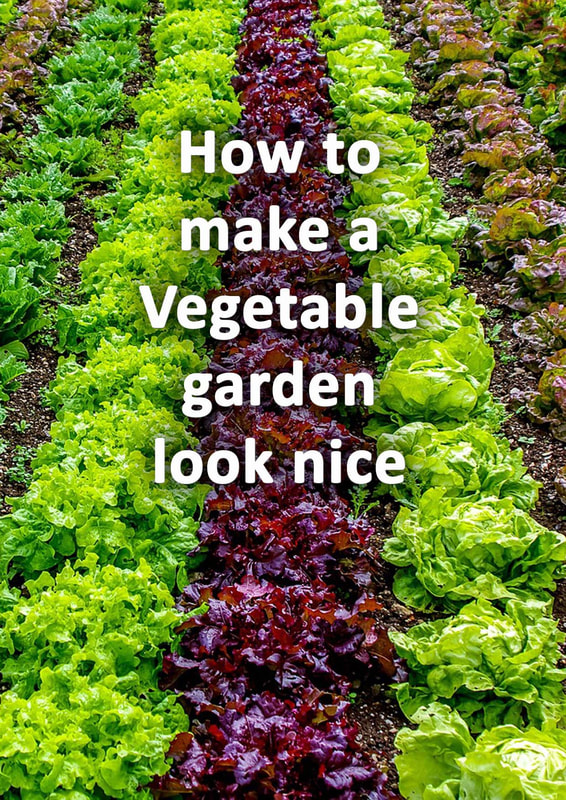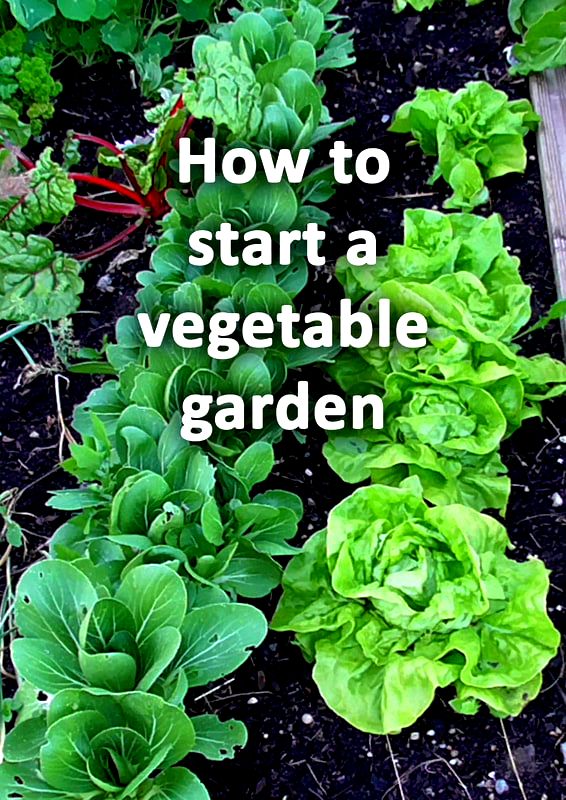|
This article contains affiliate links
Building a vegetable garden can be a very exciting project for gardeners old and new. Designing your vegetable garden correctly from the start is vital for successful vegetable cultivation
Growing vegetables well requires much continuous care, irrigation and sunlight. Positioning a vegetable garden in the wrong location will cause problems. There is more to designing a vegetable garden than just good looks! Effective vegetable garden layout and design has to combine many contributing elements and factors In this article I will list and describe all the design considerations of building a productive vegetable garden. Site survey
A site survey sounds a little over the top and in depth. However this involves conducting a site feasibility study for crop growing. The reason why many vegetable garden projects fail is the incorrect site is allocated. A site survey will scrutinise your sites suitability for effective vegetable gardening. The most important thing above all is sunlight! Your vegetable garden will really need at least 7 hours of daily sunshine during the growing season.
This is so vegetables can photosynthesise properly and grow into strong and healthy specimens. If you have many overhanging trees this will not be ideal for a vegetable garden.
Not only do trees block out sunlight have their roots drain the surrounding soil of water and nutrients. Collect as much data about your site as possible listing strengths and weaknesses. Below we break down the individual elements and considerations of vegetable garden design. Drainage
Drainage will always be a major consideration when planning a new vegetable garden. Normally there is a ground saturation sweet spot when it comes to vegetable garden drainage. Most vegetables like soil have to be moist but free draining. If your soil becomes too wet and boggy it could become compacted and stagnant. Therefore, before you design your vegetable garden get an idea of its existing moisture content. Standing water during periods of heavy rainfall is an indication of saturated ground.
It is a good idea to dig a test hole in your soil around 400mm deep. If your hole is at least half full in the winter you have saturated ground.
In this scenario it will be a good idea to raise up your growing areas. Raised beds can then be filled with fertile and free draining topsoil. If your site on the whole is very boggy you may want to install drainage. Why not visit our article on how to drain your gardener here. Alternatively, you may want to read our article on vegetable garden drainage here. Soil type
One of the most fundamental elements when creating a vegetable garden is soil. Your soil should be have a deep, well drained and loamy texture with a high fertility. Most vegetable gardens start out with poor quality topsoil but improve over time. What your existing soil is like will completely depend upon your local geology. Some gardens have shallow, rocky soil while some are blessed with deep crumbly soil. The best soil for a vegetable garden will be a clay based loam.
Such a soil will retain moisture and nutrients while being well drained. Whatever your existing soil type with some work and investment it can be dramatically improved.
Why not read our article on how to improve your garden soil here. However, you always have the opportunity to build raised beds and buy in new topsoil in bulk. Sunlight
Without a doubt one of the most important design considerations of a vegetable garden is sunlight. Sunlight will provide your crops with the energy they need to grow large and healthy. When designing a vegetable garden try to plan so rows run from North to south. This will provide good sunshine coverage to all of your vegetables. Make sure your plots get at least 7 hours of sunshine during the growing season. You may be surprised just how much site boundaries and trees can shade out your borders. In such cases prune surrounding vegetation and try raising up your growing beds. Shelter
The role shelter has to play in growing crops cannot be underestimated. Even though vegetables like open and sunny sites they do not like exposure to strong winds. This is particularly relevant if you have a large garden in a rural area. Try to study your regions prevailing wind direction. In the UK warm trade winds blow from the southwest and cold winds come from the east. Make sure your vegetable garden is located on a sunny but well sheltered site. Microclimate
Micro climates are where physical features such as structures and landform alter local temperature and climate. The most typical example of this would be a south facing patio next to a house. During sunny days the hard surfaces reflect the suns radiation and heat up. This leads to warm air circulating creating a warm microclimate. When designing vegetable gardens microclimate can allow you to grow more exotic vegetables and extend your growing season. Try to look for opportunities to create sheltered sun traps within your vegetable garden. Access
A big trap many fall into is not making their vegetable garden accessible enough. The old saying ‘out of sight, out of mind is very relevant here! Ideally your vegetable garden should be in full view of your home and accessible. This will provide you the convenience and constant reminder to keep your vegetable beds well maintained. Vegetables need daily assessment and attention to keep them growing at their best. You will have to water them daily during dry spells and weed them regularly. This is why it is so important to have close and convenient access to your vegetable plots. Search for precedent
When designing vegetable gardens it is beneficial to get some outside inspiration. One of the best ways to do this is search for precedent images. In the age of the internet there has never been a better time to search for great ideas. Some of the best ways to find vegetable garden ideas is Pinterest and Google images. Plan your layout
It is very common for vegetable gardeners to prefer neat and orderly growing spaces. This adds a level of organisation and uniformity to growing beds. Very rarely do many talk about the beauty of a well kept vegetable plot. Vegetable gardens can become a real focal point and central feature within a garden. Planning your layout can be a fun and creative exercise. At this point it is worth creating a scaled drawing to design your space. Plan for pests
Planning to minimise the impact of garden pests in a vegetable gardens design is important. This is normally a complete after thought for many new plots. It can be remarkable just how much damage pests can do to a vegetable garden. This is even more so the case when deer and rabbits can access your garden. Pigeons can also be very damaging to crops and of course our old friend’s slugs.
If you have a particular problem with slugs why not visit ourarticle on how to get rid of them.
Generally, vegetable gardens with a perimeter fence, raised beds and paved paths have much fewer pests. The closer your beds are to the home will also put off unwanted visitors. Raised beds?
Raised beds are one of the most popular ways of creating vegetable gardens. They can allow you to add good quality soil and to work at a comfortable height. Raised beds have to be robust and well built to retain large quantities of soil. These are typically constructed using concrete, brick or timber sleepers. Raised beds also allow you to increase levels of drainage if you have a boggy site. If you require a competent raised bed builder why not contact us here. Growing under cover
Growing under cover can provide so many advantages to a new vegetable garden. When designing your vegetable garden it is highly recommended to include a polytunnel or greenhouse. Not only will this extend your growing season its perfect for raising seedlings early. Growing undercover can also allow you to grow exotic species during the long summer months. In winter covered areas can also be used to grow hardier crops such as Cabbage, lettuce and Pack Choi. There are so many products on the market today of varying shapes and sizes. Surfacing
Surfacing around your vegetable borders can improve access, reduce maintenance and reduce pests. Generally the best surfacing for around vegetable plots is paving or concrete. This reduces any need for ongoing maintenance and prevents weed establishment. It is very common for people to surface around their vegetable beds with bark and gravel. The problem with this is soil spillages can mount up over time and lead to weed establishment. These surfaces are also awkward for wheeled carriages such as wheelchairs and wheelbarrows. Recycling nutrients
When planning a vegetable garden you should think about how you will recycle nutrients. Fertility is very important for a vegetable gardens soil, the best way to do this is with composting. Try to implement a composting area into your design plan. This will allow you fast and easy access to fresh fertiliser and organic mulch. It is amazing how much organic matter is generated from harvesting, weeding and general garden maintenance. Designing a vegetable garden with recycling and composting in mind is very beneficial. Irrigation
Large and expensive irrigation systems are very rarely needed for most vegetable gardens. However, a common problem during the summer months is vegetable beds getting too dry. Once soil has dried out it is very difficult to rehydrate it deeply. Normally the surface becomes dry and cracked which results in water running straight off the surface. Therefore the best option is to keep your vegetable beds well irrigated during warm and dry periods. It’s beneficial to design a vegetable garden in close proximity to a water source for this reason. Storage
Storage is something very few vegetable garden designers think about to their detriment. A storage shed at your allotment can become an essential necessity! This is especially so for storing vegetables for the leaner months. Very often, vegetable gardens produce a glut of produce all at once. It is good to provide a cool, dry and dark place to hang and store your vegetables. Small storage sheds can also provide the perfect place to store tools and accessories.
Thank you for reading our article on how to design and vegetable garden. If you require a vegetable garden designer or builder do not hesitate to contact us here.
Below we have linked to more of our vegetable garden articles you may find useful.
'As an Amazon associate I earn from qualifying purchases'
0 Comments
Leave a Reply. |
The Author
|
Landscaping services across Buckinghamshire, Amersham, Aylesbury & High Wycombe
Hyde Heath, Amersham, Buckinghamshire |
|




